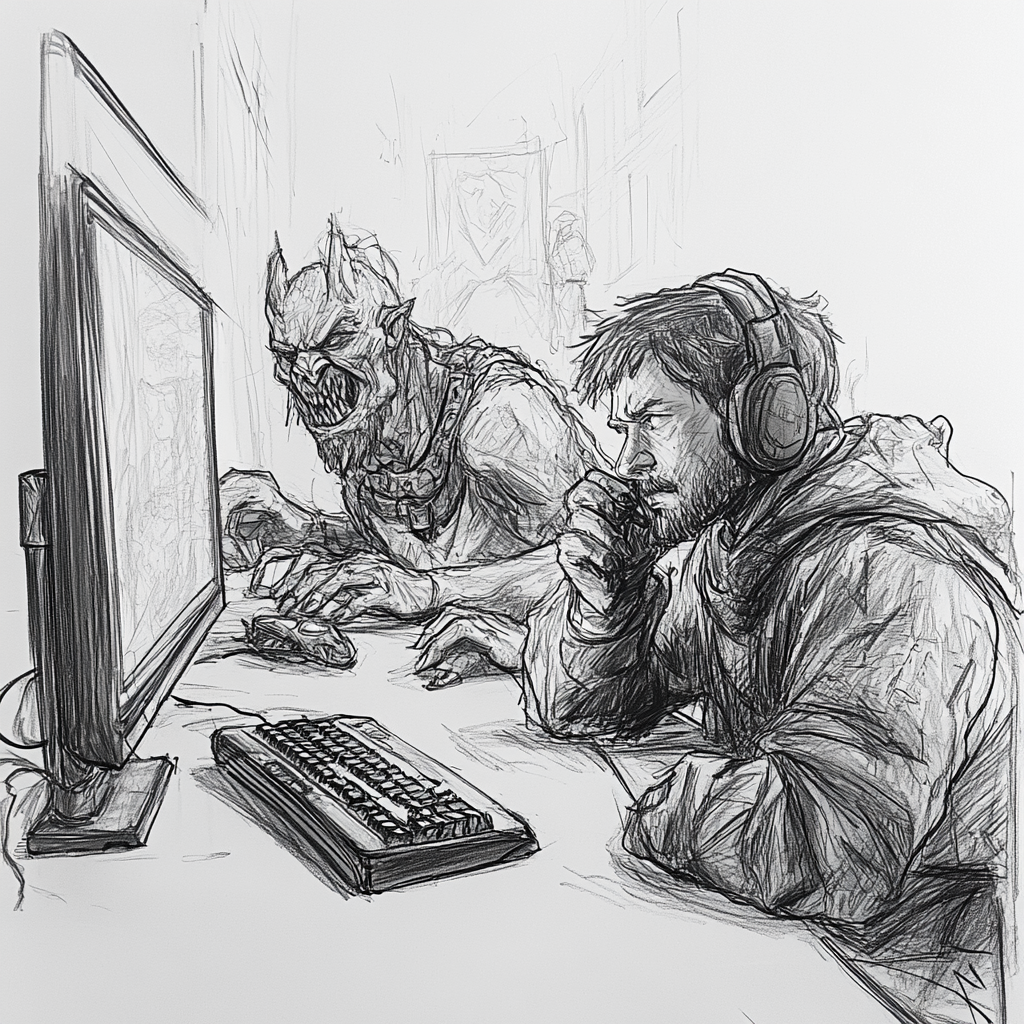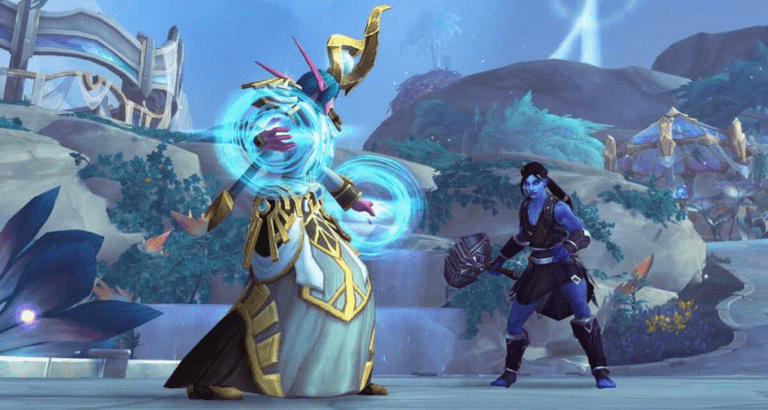In the hyper-competitive gaming landscape, where user acquisition costs have skyrocketed and players are inundated with choices, retention has emerged as the linchpin of sustainable success. Therefore, knowing the best player retention strategies and trends for 2025 is pivotal for anyone working in the industry.
Studios that fail to prioritize retention risk watching their player bases evaporate like water in a desert; no amount of flashy marketing can refill a leaky bucket.
In this article, we will do a deep dive into the best player retention strategies that are reshaping the industry, backed by data, case studies, and actionable insights. By the end, you’ll understand how to transform fleeting players into lifelong advocates and why games like Fortnite and Clash of Clans have mastered this art.
Don’t miss out: Direct-to-consumer games – a new era of game development?
The 6 best player retention strategies as of late

Personalization: Beyond Skins and Avatars
True personalization isn’t slapping a username on a leaderboard; it’s about understanding players’ psychological drivers. Modern tools like Solsten’s Navigator analyze cultural values, emotional triggers, and behavioral patterns to create hyper-personalized experiences.
The key lies in moving beyond demographics. AI-driven platforms now enable real-time adjustments, such as dynamically altering difficulty based on skill or offering rewards aligned with individual playstyles.
Cameron Stewart of SciPlay emphasizes that 2025’s winners will leverage AI to craft “unique paths for each player” ensuring every session feels bespoke.
The Onboarding Experience: Hook Players in the First 60 Seconds
Day 1 retention is the first litmus test. Games like Mario Kart Tour excel by teaching mechanics through intuitive tutorials, not walls of text. A poorly designed onboarding process can tank retention. The solution? Balance simplicity with engagement:
- Interactive tutorials: Let players learn by doing, not reading.
- Immediate rewards: Offer a taste of progression early, like Candy Crush’s instant level-ups.
- Adaptive pacing: Adjust complexity based on player behavior analytics.
For complex genres, extended onboarding is critical. Strategy games, for instance, require gradual skill-building to avoid overwhelming newcomers.
Content Evolution: The Never-Ending Story
Players crave novelty. Fortnite’s 80% retention rate stems from relentless updates: new maps, seasonal events, and crossover collaborations keep the experience fresh. But content isn’t just quantity, it’s about depth.
- Narrative expansion: Games like Final Fantasy XIV use cliffhangers and evolving storylines to pull players back.
- Meta-systems: Add progression layers, such as Clash of Clans’ clan wars, which boost retention by 30%.
- LiveOps: Time-limited events create urgency. Diablo IV’s seasonal leaderboards reset progress, reigniting competition.
A content roadmap isn’t optional, it’s a promise to players that their investment will keep paying off.

Read also: Story-driven games – the power of narrative in gameplay
Social Fabric: Building Communities, Not Player Counts
Humans are social creatures, and games that foster communities see retention soar. Clash of Clans transformed solitary play into a collaborative experience with clans, resulting in a 30% retention lift. Key tactics include:
- Guilds and clans: Encourage teamwork and accountability.
- Cross-platform play: Let players engage on mobile, PC, or console seamlessly.
- Shared milestones: Celebrate collective achievements, like raid completions in World of Warcraft.
Gamification: Turning Play Into Passion
Gamification taps into intrinsic motivators like mastery and competition. Duolingo’s streak system increased retention by 34% by rewarding daily engagement. Effective implementations include:
- Daily challenges: Small, achievable goals that encourage habitual play.
- Tiered rewards: VIP programs with exclusive perks for loyal players.
- Leaderboards: Fuel rivalry, but ensure fairness through skill-based matchmaking.
The goal is to make players feel their time is respected and rewarded.
Data-Driven Design: Metrics That Matter
Retention can’t be optimized blindly. Tracking metrics like DAU/MAU ratios and churn rates reveals pain points.
For instance, a low D30 retention often signals inadequate endgame content, necessitating deeper meta-systems. Tools like Firebase and Flurry Analytics provide real-time insights, enabling studios to iterate rapidly.
Case in point: A/B testing in The Legend of Zelda: Breath of the Wild revealed players loved exploration, prompting developers to expand the open world.
About ethical monetization: always respect your playerbase
Apart from all the aforementioned points, perhaps the biggest factor influencing player retention is the ethical monetization aspect. All the best player retention strategies take that into consideration, so that’s definitely something worth telling.

The line between sustainable monetization and player alienation has never been thinner. In an era where 72% of players cite aggressive monetization as their top reason for abandoning games, studios must rethink profit strategies as a core retention tool.
Ethical monetization isn’t about sacrificing revenue; it’s about aligning business goals with player satisfaction to create ecosystems where spending feels optional, rewarding, and additive to the experience.
Take Fortnite’s cosmetic-only model as a benchmark. By focusing on non-essential items like character skins and emotes, Epic Games tapped into players’ desire for self-expression without compromising competitive balance.
This approach generated $9 billion in revenue across five years while maintaining a loyal player base. Players will willingly open their wallets when purchases enhance, rather than gatekeep, their enjoyment.
Transparency is equally critical – opaque mechanics like hidden loot box odds or misleading limited-time offers erode trust, often irreparably.
When Star Wars Battlefront II faced backlash for locking core characters behind grind-or-pay walls, EA lost 62% of its stock value in weeks. The subsequent shift to clearer progression systems and upfront disclosure of microtransaction odds exemplifies how honesty can salvage player relationships.
The rise of “value-added” expansions offers another blueprint. CD Projekt Red’s The Witcher 3: Wild Hunt set a gold standard with its Hearts of Stone and Blood and Wine DLCs, which delivered narrative depth and gameplay innovations that felt worth their price.
Read also: How does Minecraft make money since its launch?
Players didn’t just tolerate these purchases, they celebrated them as meaningful enhancements to an already complete experience. Contrast this with games that fragment base content behind paywalls, a practice that left Destiny 2’s player base fractured and frustrated until Bungie overhauled its model.
Ultimately, ethical monetization thrives on empathy. By prioritizing player dignity, studios cultivate communities willing to invest long-term.
Retention as a philosophy, not a feature

The best player retention strategies aren’t checkboxes – they’re a mindset. From AI-driven personalization to community-centric design, retention requires empathy, innovation, and relentless iteration.
We here at Main Leaf have honed our player retention strategies over the last 12 years, and we have helped countless developers transform metrics into meaningful connections. As the industry evolves, so must our approaches.
For those ready to craft unforgettable player journeys, get in contact with us so we can help you develop a player retention strategy that will elevate your game rather than hinder it.

